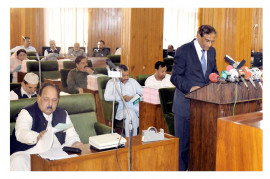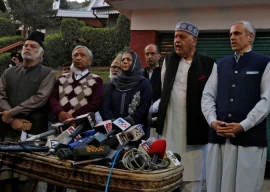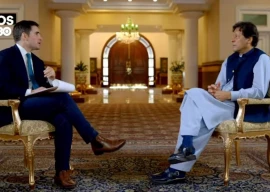
After a successful ceasefire agreement with Pakistan on the LoC, Prime Minister Narendra Modi has taken the first initiative to connect with the disconnected by holding a high-level meeting with Kashmir-based political parties, on June 24, in Delhi for which invitations are issued to eight regional political parties of Kashmir. Whether all or any of them will join or not is yet undisclosed, except for Apni party chief Altaf Bukhari and Tarigami of CPI. Farooq Abdullah, however, has said that the Gupkar alliance will participate, though there is no agenda for the meeting.
None from the multiple pro-Indian (anti-Kashmiri) Jammu outfits and Kashmiri Pandits are invited, perhaps taking them for granted or because of them being irrelevant given the mood in the country after August 5, 2019. They are blowing fire against Modi and Kashmiri leaders.
It would be the first-ever high-level meeting after scrapping the special status of the state under Article 370, bifurcating and downgrading the state in two union territories. Official sources have not disclosed the agenda, but speculations are to kickstart a discussion on the political and development process which may include the restoration of promised statehood and elections.
The August 2019 action, abrogating the special status is supposedly to stay, and won’t be withdrawn. It was on the cards of BJP since 1950 but now it is the resolve of the Indian state.
Congress and other alliances had paved the way to dilute Article 370 right from the enforcement of Indian Constitution, and it was reduced to a “hollow shell” as was once said on the floor of the Lok Sabah by late home minister Gulzari Lal Nanda in mid-60s.
Preceding the obliteration of the special status of the state in 2019, 260 out of 395 articles and, 95 out of 97 entries of the Union list, besides more than half a dozen entries from the concurrent list out of 47, and seven schedules of the Indian Constitution stood extended to the state. There remained abysmally no ‘speciality’ in the state, except psychological consolation.
The BJP brute majority in parliament has done away with whatever was left including local rights guaranteed under Article 35A, though some other Indian states have similar rights one way or the other. The position of the GOI is very clear now. A miracle alone may change it.
However, it is not easy to digest this brazen vandalism as a part of a constitutional scheme given the UN resolutions, the Kashmiris’ relentless fight to keep their identity, the global opinion and Indian civil society’s outcry against the state, besides the commitment of Pakistan and its closest allies to watch and secure the right to self-determination for Kashmiris.
Whatever the interim measures, the ultimate and final solution rests in a pacific settlement of the land between India-Pakistan and the Kashmiris given whosoever administers it and in whatsoever manner.
Except for BJP and its outfits, all other stakeholders have a principal position on the issue to restore the statehood of J&K and articles 370 and 35A before starting any political process. A midway has to be found.
The stalemate may be broken by a quid pro qua of restoring the statehood of J&K minus Ladakh, by placing J&K in the group of states under articles 371A to 371J of the Constitution which consist of special, temporary and transitional provisions with local rights similar to the erstwhile Article 35A. It will not be a bad bargain under the new scenario.
The honesty of the purpose could be gauged if the invitation is given to all stakeholders whether mainstream, non-mainstream parties or dissidents. And one can just wish all invitees to accept and join with their own point of view and proposals. There can be no alternative to dialogue. If it bears fruit, good; if not, the set agenda for participants is there to pursue. The public opinion will lean in favour of participants if their point of view is not given weight; and against them for being stubborn if they don’t participate.
We have the golden precedents of All India Muslim League and All India Congress seeking azadi from British imperialism without prejudice to stand for elections, take an oath of allegiance to the Queen and be part of parlays and the government. Same was the position of the ANC in Africa of the subjugated South Africans under British colonial rule.
No rule of estoppel applies against human and fundamental rights to seek the right to self-determination and join hands in governance pending liberation.
There is of course no agenda for meeting, but it is equally not restricted. When talks begin, everything if relevant to the occasion, can come under discussion and invitees have a lot in their stock to talk about since early 2019. Then it’s the proverbial ‘baat se baat nikalti hai aur door tuk jati hai.’ The following is an example.
Notwithstanding the extra-constitutional measures of August 2019, the dominant power is India and the dominated have to talk to the Indian government to set right what went wrong. This can be done by a consensus followed by an amendment in the Constitution or by way of an ex-post facto measures visualised by articles 2 and 3 of the Constitution which respectively allow admission of states to the Indian Union on any condition and create new states or add to gather new territories in any state.
If followed honestly, the subsequent action would be drawing boundaries and delimitation of constituencies which is inevitable after bifurcation of state, admitting the new lot of so-called “West Pakistan non-state subject refugees” as voters for state assembly who were not qualified before August 2019 and the consequent increase in the number of state assembly seats.
The speculations of creating new union territories in parts of the state across the Chenab or bracketing them with south Kashmir keeping the Patni Top as the natural revenue line, can be a possibility and is actually viable given the socio-political, lingual and ethnic presence involved.
If worst comes to worst this can be the basis of creating two administrative states on socio-political reasons, language, or on the basis of ethnicity, geography, and culture. This was the spirit of creating Uttarakhand, Jharkhand, and Nagaland states in India, and the same principles apply to delimitation of constituencies.
This may satisfy and solve the deep lying aspirations of two regions. This is actually the demarcation line between mainland Jammu and the rest.
Though there is nothing on the cards, it is inevitable that the Pakistani side of state territories will want to talk of their final or interim status in the mainland pending the final resolution of the state as a whole.
How long can the future of Gilgit-Baltistan, with a population of around 1.5 million and of AJK with a population of over four million, be kept in limbo, and why? Why are they governed from Islamabad without representation in policy and decisionmaking on matters relating to the federation but affecting the people of the main land? There is no voice for India at all in these areas like in IOK. Why should they be ignored, neglected or taken far granted?
Leaders of AJK wish to continue likewise, by being free from accountability and all political adversaries are in league with each other on this point. It is a heaven for corruption.
But common people are averse to it. They want the status like that of their counterpart Pakistanis and the accountability of the corrupt, failing which the national interests of Pakistan would be adversely affected.
Pakistan too should attend to aspirations of people of these areas, lest it is too late.
Like Opinion & Editorial on Facebook, follow @ETOpEd on Twitter to receive all updates on all our daily pieces.



1732256278-0/ellen-(1)1732256278-0-165x106.webp)
1725877703-0/Tribune-Pic-(5)1725877703-0-165x106.webp)










COMMENTS
Comments are moderated and generally will be posted if they are on-topic and not abusive.
For more information, please see our Comments FAQ